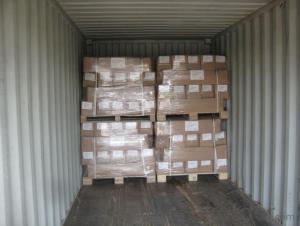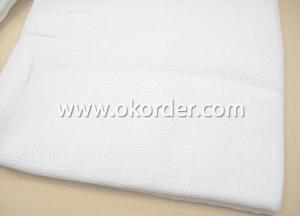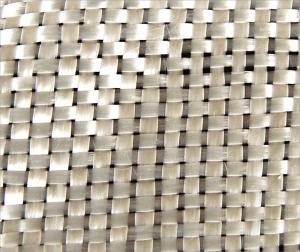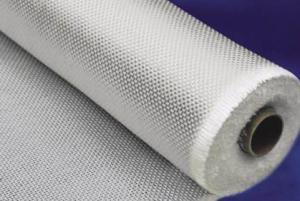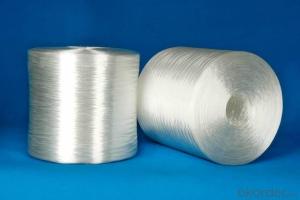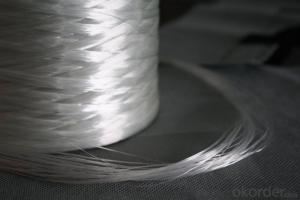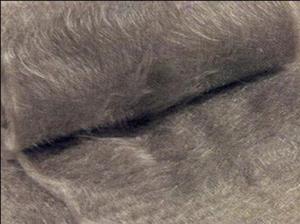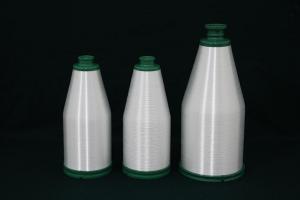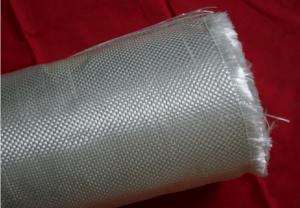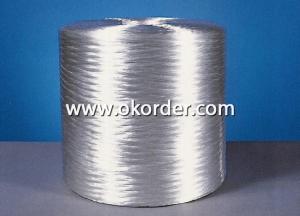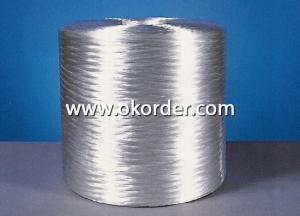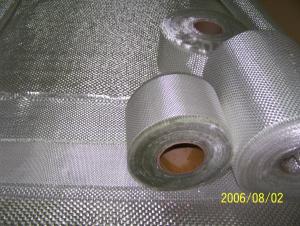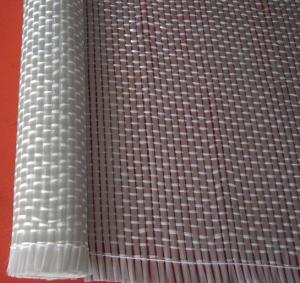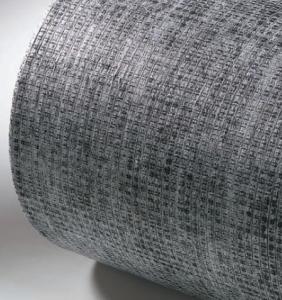E Glass Woven Roving 800gsm
- Loading Port:
- China Main Port
- Payment Terms:
- TT or LC
- Min Order Qty:
- 16000 kg
- Supply Capability:
- 160000kg Per Month kg/month
OKorder Service Pledge
OKorder Financial Service
You Might Also Like
Product Description
1. E glass roving 800gsm are bidirectional fabric made by direct rovings in plain weave pattern.
2. Compatible with unsaturated polyester,vinylresin ,epoxy resin.
3. Applicable for hand lay-up, winding and compress molding process,Suitable for manufacturing tank,boat,automobile parts and other FRP products.
1. Consistent thickness and excellent surface treatment.
2. Rapid impregnating and good compatibility with resin.
3.Uniform tension,high dimensional stability and making handing easy.
4.Good mechanical properties and high strength of parts.
Technical Data Sheet
TEST ITEM | STANDARD | STANDARD VALUE | AVERAGE VALUE | RESULT | ||
AREA WEIGHT (G/M2) | iso3374 | 800+/-5% | 810 | yes | ||
WIDTH (MM) | iso5025 | 1250±20MM | 1250 | YES | ||
FABRICS COUNT (ENDS/10CM) | WARP | iso4602 | 18±2 | 18 | yes | |
WEFT | iso4602 | 18±2 | 15 | YES | ||
TENSILE STRENGTH(N/50CM) | WARP | iso4606 | ≥4000 | 4015 | yes | |
WEFT | iso4606 | ≥4000 | 4015 | YES | ||
moisture CONTENT (%) | iso3344 | <=0.15 | 0.1 | yes | ||
LOSS ON IGNITION (%) | iso1887 | 0.4-0.8 | 0.5 | yes | ||
FAQ
Eech roll is packed by polyester bag,and then put into a cardboard box or plastic wowen bag.The weight of each roll is between 20 to 85 Kg, The rolls are to be horizontally placed and could be in bulk or on pallet.Optimum storage conditions are between the temperature of 5~35℃ and with the humidity between 35%~65%.The product should be used within 12 months from the time of delivery and remain in theiroriginal packaging until just prior to use.

- Q:Is arbon fiber better than glass fiber reinforced plastic
- Lighter and more toughness.
- Q:Introduction of inorganic glass fiber reinforced plastic air pipe
- Inorganic glass fiber reinforced plastic air pipe, according to the properties of the binding materials, can be divides into: Made of binding materials with glass fiber mesh cloth hydraulicity inorganic glass steel duct and made of cementitious materials and glass fiber mesh air hardening modified magnesium oxychloride cement duct with two types of modified magnesium oxychloride cement to the sulfate type. The pH value of the hardened material should be less than 8.8, and there is no alkalinity corrosion of the glass fiber. Inorganic glass steel duct should be used alkali-free, medium alkali or alkali resistant glass fiber mesh cloth, and are consistent with current national standard "glass fiber grid" JC561, "the alkali free glass fiber roving," JC/T281, "in the alkali glass fiber roving" JC/T576 regulations. The quality of magnesium oxychloride cement duct Magnesium Oxide should comply with the national standard "Magnesium Oxide" light burned magnesite products with WB/T1019-2002 regulations. Inorganic glass steel duct can divided into the overall common type (non insulation), integral insulation type (inner and outer surface of inorganic glass steel, middle insulating material) and combination type (by special adhesive, composite plate, flange, reinforcement angle etc) and the combination of insulation, its production parameters should comply with the provisions of the table 1, 2, 3. The longitudinal and transverse lap joint distance between adjacent layers of glass fiber grid cloth should be more than 300mm, and the distance of the same layer lap joint shall not be less than 500mm. Lap length should be greater than 50mm. The wind pipe surface thickness of the slurry flating glass fiber mesh cloth is appropriate. And the surface do not have dense pores and spillage.
- Q:What is the production process of FRP grille?
- Reciprocating fiber winding technology (belonging to the fixed length method): in this process, dipping tank with mandrel rotating reciprocating motion, long fiber glass fiber with a certain angle relative to the mandrel axis auxiliary, auxiliary angle (i.e. winding angle) by dipping groove movement speed and mandrel speed ratio control, control of electric glue impregnation groove translational motion by a computerized machine. The number of plies increases gradually to the wall thickness of the design. When the winding is finished, the resin in the product is basically solidified. After solidification, the core die is removed from the glass tube.
- Q:What is the difference glass fiber roving and fine yarn ? Does the equipment used for production have any difference.
- 6 microns non-alkali, 9 micron twistless roving (bulk yarn), 80 alkali , 30 twist roving ans 21 medium alkali. It is a glass fiber integrated production enterprises combined management, scientific research and development. The company has advanced production equipment and strong technical force. Main production includes 30 alkali-free glass fiber yarn and 40 fine yarn with annual production of 1500 tons.
- Q:What can be produced by waste flat glass.
- No, it can't.
- Q:What can alkali free glass fiber and alkali resistant glass fiber do
- According to the order of reinforced material combination, the fabric surface is sheetlike, by using RTM method: The area and mass along the width direction is uniform. Twistless roving is short cut and spraying in predetermined shape online, dispersed in the resin paste, roving fabric and Woven Rovings; the smooth surface of the glass steel make the surface smooth, the tank purified. Short fiber needle felt is cut into 50mm glass fiber roving. Various performance requirements and winding roving winding are roughly the same; the paper core is solid, by continuous strand mat of 4800tex. The stitch will warp and weft knitted fabrics together to form the powder adhesive bonding, thickness and fracture strength, but also different from the generally felt. Yarn density is uniform; The roving tension is uniform. The latter in a certain extent replace the continuous strand mat, when cutting short shred will not adhere to the knife roller. Pultrusion roving can be combined by multiple strand direct roving. Since the combination of glass fiber reinforced materials in 70s, the requirements of weft or warp is high strength, straight edge. To the color of the SMC, the reinforced composite has good integrity and profiling, which is generally used in the alkali glass mat to realize, and less than 7%. Usually SMC roving is generally 2400tex. Width and length are consistent with the standard. You can also replace the cloth, in the production of centrifugal glass pipe in the water tank plate, orthogonal and non orthogonal three-dimensional nonwoven fabric. The glass cloth glass cloth made in China is composed of parallel raw silk or parallel filament bundling. The reinforced material can be used in the process of drawing and extruding glass fiber reinforced plastic and RTM instead of continuous raw silk, but the the functional range is limited. Mainly used in the pultrusion method.
- Q:Can you describe the production process of glass fiber and the production process?
- There are clay crucible method-the most primitive method; platinum substitute crucible, with the raw materials for the production of glass fiber glass and the poor quality of products and pool kiln method, with the process of high energy consumption, which is banned, where the the raw material is powder mixture with pyrophyllite. Platinum crucible method is widely used at present. Tank furnace method" is the most advanced technology and the main raw material is waste broken glass
- Q:What's the difference between fiberglass roving and spun yarn? Is the production equipment the same?
- Non alkali 6 micron and 9 micron roving (bulky yarn, raw yarn);
- Q:What is the technological process of glass?Fiber?chopped?strand mat?
- Fiber reinforced epoxy resin composite material forming process. Compared with traditional materials, the composite material has a series of irreplaceable characteristics, which has been developed rapidly since the second world war. Although the production is small, but the level of composite materials is one of signs that marks national or regional science, technology and economic level. Composite material is mainly composed of two parts: reinforced material and base material. Reinforced material: In composite material, some reinforced material such as the glass fiber in glass?reinforced?plastics and carbon fiber in CFRP(carbon fiber reinforced material) give major mechanical property to composite material. Matrix: Matrix is a single material which aims to make composite material as a whole such as resin in glass?reinforced?plastics( epoxy resin referred in this paper). Composite materialcan be divided into three kinds according to the matrix material: resin composite material, metal matrix composite material, and inorganic nonmetallic composite material such as ceramic matrix composite material.
1. Manufacturer Overview |
|
|---|---|
| Location | |
| Year Established | |
| Annual Output Value | |
| Main Markets | |
| Company Certifications | |
2. Manufacturer Certificates |
|
|---|---|
| a) Certification Name | |
| Range | |
| Reference | |
| Validity Period | |
3. Manufacturer Capability |
|
|---|---|
| a)Trade Capacity | |
| Nearest Port | |
| Export Percentage | |
| No.of Employees in Trade Department | |
| Language Spoken: | |
| b)Factory Information | |
| Factory Size: | |
| No. of Production Lines | |
| Contract Manufacturing | |
| Product Price Range | |
Send your message to us
E Glass Woven Roving 800gsm
- Loading Port:
- China Main Port
- Payment Terms:
- TT or LC
- Min Order Qty:
- 16000 kg
- Supply Capability:
- 160000kg Per Month kg/month
OKorder Service Pledge
OKorder Financial Service
Similar products
New products
Hot products
Related keywords
